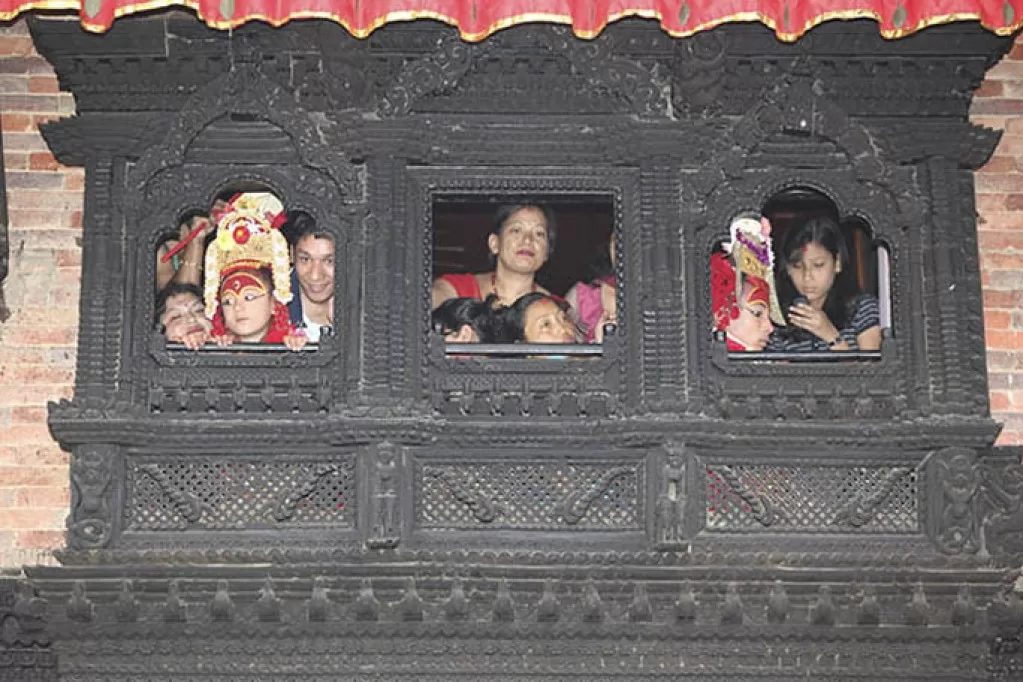Nepal is renowned for its abundant festivals, as well as its diverse biodiversity, cultures, and traditions. The country is home to people of various races, ethnicities, languages, and religions, all contributing to the rich tapestry of Nepalese society. Within these distinct groups, there exists a wide range of traditions and ways of life, adding to the overall diversity of the nation.
The following are some of the notable ones: Major feasts and festivals that are celebrated in Nepal are described below:
Dashain
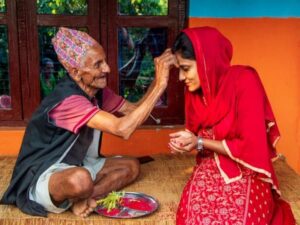
The festival celebrated for ten days starting from the first day of the bright half of Asoj is commonly known as Dashain or Dashami, highlighting its significance. Dashain is considered the national festival of Nepal. It is characterized by the blessings bestowed by respected individuals, the application of Tika on the forehead, the placement of Jamara on the ears and hair, and the wearing of various types of garlands around the neck. Additionally, various festivities such as the worship of different forms of Goddesses for nine days and the observance of Phulpati festival are an integral part of this celebration.
Tihar

The festival, known as Tihar, is a five-day celebration that begins on the thirteenth day of the dark half of the month of Kartik. It is a time of showing affection and exchanging good wishes between brothers and sisters. The festival is associated with the story of Yamaraj, the god of death, who visited his sister Yamuna’s home for five days during this time. Yamuna served and worshipped Yamaraj, hence the festival is also referred to as Yamapanchak.
During Tihar, various beings are worshipped including crows, dogs, Laxmi (the goddess of wealth), and cows. On the last day, brothers are worshipped. Sisters pray for the happiness, prosperity, and long life of their brothers, and place a Tika (a mark) on their forehead. They also offer them sweets. Additionally, people celebrate by singing songs called Bhailo and Deusi.
Ghode Jatra (Horse Festival)
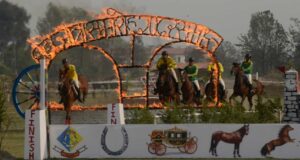
In the Kathmandu valley, the festival known as Ghode Jatra takes place on the day of the new moon in the month of Chait, or on the 14th day of the second half of Chait, also known as Pichas Chaturdashi. It is celebrated concurrently with Panhachahne or Pasachahne, Mitra Chaturdashi, and the worship of Mahaddho. As part of this festival, an event called the horse racing ceremony is held at Tudikhel in Kathmandu. The horse holds significant symbolism, representing discipline, power, and speed.
Gaijatra (Cow Festival)
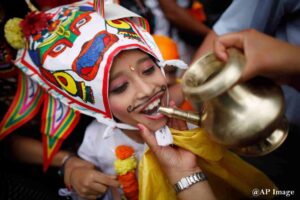
The festival of Gaijatra is celebrated for seven consecutive days, beginning the day after Janaipurnima or on the first day of the dark half of Bhadau. It is rumored that King Pratap Malla initiated the Gaijatra festival in order to console his grieving queen, who had lost their son, Chakrabatendra Malla. The festival successfully relieved the queen of her sorrow. Throughout this festival, various events such as Khadga Jatra, Ropaijatra, Lakhenach, Shad Darshan Khayli, Loknritya, Dabalinritya, and drama are showcased. It is widely believed that after the celebration of Krishanajatra on Lord Krishna’s birthday, there is no longer any fear associated with Lakhe, Khyali, ghosts, evil spirits, and serpents, as Lord Krishna was known to defeat and eliminate demons and evil entities.
Maha Shivaratri
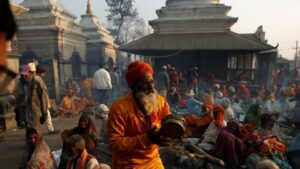
Every year, Maha Shivaratri, a Hindu festival, takes place on the fourteenth day of the dark half of the month of Phagun. On this day, a large number of devotees gather at the Pashupatinath temple in Kathmandu and other temples dedicated to Lord Shiva. Additionally, Nepal also celebrates Army Day on Maha Shivaratri.
Teej

Teej, a significant festival for Nepali women, is celebrated on the third day of the dark half of Bhadau. Primarily observed by Hindu women, this festival holds great importance as it entails fasting. The tradition of fasting is rooted in women’s desire to obtain a cherished husband and ensure a long and healthy life for their current husbands.
Buddha Jayanti
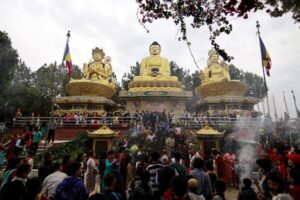
The Buddha, born on the full moon day of Baishakh in 563 BC, achieved enlightenment and Nirvana on the same day in 483 BC. Consequently, this day, known as the Buddha Jayanti, is celebrated nationwide. Many individuals gather at Boudhanath, Gumba, and monasteries to commemorate this occasion.
Lhosar
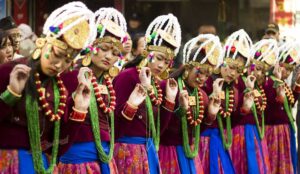
The Sherpa, Bhote, Gurung, Thakali, and Magar communities in the northern mountain region celebrate the Lhosar festival with great joy to mark the beginning of the new year according to the Tibetan calendar, which falls in the month of Magh. The years are counted using names such as mouse, cow, tiger, cat, eagle, snake, horse, sheep, monkey, bird, dog, and boar, with the cycle repeating every 12 years. The Sonam, Tamu, and Gyalbo Lhosar are among the different Lhosars that are traditionally given public holidays.
Janai Purnima
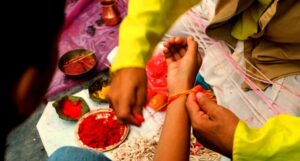
Janai Purnima / Rishitarpani Purnima is observed every year on the full moon day of Shrawan. This auspicious day marks the wearing of a new sacred thread and the tying of a Rakshyabandhan (yellow or red thread) around the wrist by priests. As a token of gratitude, the priests receive an honorarium. Additionally, in certain communities, people celebrate by consuming nine different types of sprouted lentils known as Quanti. In the Terai region, sisters traditionally tie decorative bands called Rakhi around their brothers’ wrists, symbolizing a wish for each other’s longevity and well-being.
Chaite Dashain
The festival, known as small Dashain, is observed on the 8th day of the bright half in the month of Chait. It is widely celebrated by the people of Lamjung, where elaborate festivities take place. On this day, the Chariot procession of Machindranath is solemnized.
Shree Panchami

Shree Panchami or Basanta Panchami is a festival celebrated on the fifth day of the bright half of Magh. It signifies the beginning of the spring season and is dedicated to the Goddess Saraswati, the deity of knowledge. People worship and honor her, reciting hymns in her praise. It is believed that one can acquire knowledge by wholeheartedly worshipping Goddess Saraswati at temples and in homes, as well as by inscribing her name on temple walls. Additionally, on this day, a special event called Basanta Shrawan takes place in Hanumandhoka palace, where people listen to chants and hymns associated with the spring season.
Udhauli & Ubhauli
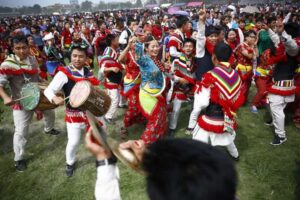
The festival celebrated by the Rai people is known as Udhauli and Ubhauli, and it takes place twice a year. Different groups within the Rai community celebrate the festival in various ways, such as Chandi Naach, Sakela or Sakewa, and Baishakhe and Wadangmet. These celebrations occur at different times due to the diverse cultural practices among the Rai people. Ubhauli is celebrated during Biashakh and Jeth, while Udhauli takes place during Kartik and Mangsir. During this festival, Nakchhong or priests perform worship rituals at locations like Chandithan, Margathan, and Mangkhim, reciting the sacred scriptures called Mundhum. Additionally, people honor their ancestors, participate in traditional dances and songs accompanied by cymbals, and enjoy delicious food.
Jur Sital (Judshital)

In Nepali culture, Baishakh 1 is considered the New Year. However, in Maithili culture, Jur Sital falls on the 2nd of Baishakh and is also believed to mark the beginning of the New Year. On this day, people come together to celebrate by engaging in collective feasting and cultural programs. The festivities are filled with excitement and energy, similar to the celebration of Holi, as everyone enthusiastically throws red powder, color, and mud at each other in their neighborhoods. On the day of the festival, the elderly guardians rise early in the morning, take a bath, and complete their daily activities. They then hold pure cool water in small metal pots in their right hand palm, which they use to spray blessings onto others as a symbol of goodwill. Thus, this festival is traditionally known as Jur Sital.
Biska (Bisket Jatra)
The Jatra, also known as Bishwoketu Yatra, Bishwakrit Yatra, and Bisika Jatra, is celebrated from the fourth day of the last week of the month of Chait to the Mesh Sankranti, marking the beginning of the New Year. It is also referred to as a two-year fair since it spans from the end of one year to the start of the next. During this festival, relatives come together to exchange good wishes. The highlight of the Bisket Jatra is the chariot procession of Bhairab, the form of Shiva. Additionally, on the same day, there are events such as the collision of chariots, tongue piercing rituals, and the chariot procession.
Eid
In Nepal, followers of the Islamic religion celebrate the festival of Eid with great enthusiasm. Eid is observed during the month of Ramjan of Hijari Sambat. During this religious occasion, individuals who are financially capable donate two and a half percent of their income to assist the less fortunate. This helps ensure the livelihood of the poor. The festival involves various activities such as reciting the Quran, performing Namaz, and sacrificing animals (kurbani).
Kumarshasthi or Sithi Nakha
The Newar community has a renowned festival called Sithi or Sithi Nakha. This festive occasion takes place on the sixth day of the bright half of Jeth, with a special focus on worshipping Kumar Kartikeya and conducting a grand chariot procession. Additionally, the Newars also observe Dewali festivities on this day. Sithi festival holds significance for the farming community as it symbolizes their joy and abundance.
Gaura Parba (Gohara)
The tradition of women from different races collectively worshiping Shiva Parbati and Ganesh during this festival is celebrated in the mid-western and far-western development region and Kumaon and Garhwal region of India. Known locally as Gohara, an idol made from horse-bean flour is created and venerated during the festival. Along with offering flowers, sandalwood paste, rice grain, and incense, a mixture called Pancha Birudi, consisting of buckwheat, wheat, horse-bean, and peas, is also presented at the temple. This festival spans three days, starting from the 8th day of the dark half of Bhadau. On the 8th day, women observe a fast and worship the idol of Shiva, Parbati, and Ganesh made from grass. They also perform eight tasks that include devoted singing.
Chasok Tangnam

Like that of Vijayadashami as the great festival of Hindus, the great festival of Limbu people of Kirat community, Chasok Tangnam falls in the month of Kartik every year. Also called Nwagi worship, Chasok Tangnam is celebrated by eating things only after offering the ripe fruits (grain and fruits) to the Gods, by merry making throughout the night dancing Yalangma and Chyabrung dance and singing Hakpare song. The festival is celebrated as the symbol of solidarity, commonality, and the prosperous culture of the Limbu race.
Pata Mela
Celebrated by the indigenous nationality, Satar, of Nepal, thousands of people from Jyamir of Jhapa district and the Santhals from India participate, worship Shiva and Parbati and organize different cultural programs and sing and dance as well.
Siruwa Parwa
On the occasion of New Year, Rajbanshis living in Jhapa, Morang and Sunsari celebrate Siruwa Parwa by worshipping their family deity and by throwing mud and color among themselves. During this important festival of Rajbanshis, the garlic and onions are hung outside of their homes. There is a story that Parshuram was roaming killing Kshetriya to make the earth free of Kshetriya in the Mahabharata era and when he was about to kill Rajbanshis, Parshuram saw onion and garlic hung on the door and Rajbanshis were saved. So, they still have the tradition of hanging onion and garlic. Green leaves of seven varieties of vegetables are prepared and eaten on the same day. The family deity of the Rajbanshi, Thakur Bisari as well as the Tista River with the name of Tistabudhi is worshipped in the siruwa festival. Apart from Rajbamshi, Tharu, Tajpuriya, Kahar and Gangai also celebrate this festival with enthusiasm and delight. People on this occasion visit the fair and sing and dance ‘Rangarang’.
Seto Machindranath Jatra
The lord of all living beings, Aryawalokiteshwar, is called Seto Machindranath. He is called Shree Janbahadhya in Newari language. The idol and temple of Aryawalokiteshwar white Machindranath is located in the Machhendra Bahal or Kanak Chaitya of Keltole, Kathmandu. The chariot procession of Seto Machindranath is held to wish for the welfare of the living beings on the auspicious day, as decided by the astrologers, in the month of Chait / Baishakh with the bathing of the idol of the Lord with the milk, curd and other things and decoration with the garlands.
Rato Machindranath Jatra
The protector and the maintainer of the living creature, Lord Loknath is called Rato Machindranath . Machindranath is bathed with milk, and curd and the chariot procession starts from Pulchok, Lalitpur. When it reaches Patan Jawalakhel, the procession is concluded with the demonstration of Bhoto (upper robe) of Machindranath. This starts from Chait/Baisakh and runs for nearly a month.
Pendiya
The Tharus of mid-western and far-western Nepal celebrate Pendiya on the day when they harvest food grains from Khalihan (the place made for threshing rice). The priest of Tharus on this day performs special worshipping at Khalihan.
Gadhimai Mela
The Gadhimai Mela happens every 5 years in Bariyarpur of Bara district. Millions of devotees from Nepal and India throng to attend the fair. Buffaloes, goats and fowls are sacrificed in this fair.
Gunla Dharma
The Gunla festival is celebrated by the followers of Baudhamata from the first day of the bright half of Shrawan for a month. The devotees visit Buddhist Monasteries and Bihars in this festival to have the sight of Lord Buddha. The festival is concluded by performing the activities in three stages: Pancha Dan, public demonstration of different Gods and Goddesses and Mataya. Atyajatra falls on the second day of the dark half of Bhadau when people pay visit to pilgrimages and light butter lamps in memory of the dead relatives. Lord Buddha is believed to have won over Mar (power of evil) on the same day.
Tornalha (worship of dead ancestors)
The festival practiced as the worshipping of ancestors among the Thakali community in Nepal is celebrated for three days; starting from one day before the Phagupurnima and ending on the day after Phagupurnima. On this occasion, Khimi (Peek) is offered to the dead ancestors. In this festival, the female head of the family becomes pure by taking bath at the time after midnight and before the rooster’s crow in the morning and offers the Pinda (the ball of rice) by placing it on the leaves of Saal in remembrance of dead ancestors. The male members do not participate in offering the Pinda. Apart from eating delicious food; wearing new clothes, meeting family members and relatives etc., the archery among the males and playing small and round pebbles among females are organized as competitions on this occasion.
Trahute Parwa
In remembrance of the heroic deeds of Tamu King Mesaro and his brave soldiers to protect rural settlements from evil practices, to protect harvests, domestic animals and people from wild animals as well and to protect rural settlements from external attack, the replicated acting of chasing away the enemies across the border of the settlements is demonstrated in the Truhute festival celebrated by Gurung (Tamu). At the time of acting, armed with the weapons made from Bhakimlo, they cry loudly and they play the drums loudly. The festival celebrated by singing and dancing with the beating of musical instruments, putting black on face and by putting feathers on head, represents the costumes, the manner of line and culture of Gurung (Tamu) culture.
Saune Sankranti
Since the Sun’s southward movement on the celestial sphere starts on this day and it is the first day of Shrawan, the Karkat Sankranti is also called Saune Sankranti. On this day too, People take holy baths, have the sight of the Gods and Goddesses and worship them and in the evening, people worship the demon, Kandarak and throw Luto (a burning piece of wood) as the symbol of suffering and bad luck.
Maghe Sankranti
Makar Sankranti occurs when the Sun enters the 10th zodiac, Makar in the zodiac cycle of the Sun. Since there occurs the Sun’s northward movement on the celestial sphere and being the first day of Magh, this is also called Maghe Sankranti. People take holy baths, have the sight of the Gods and Goddesses and worship them on this day. When the Sun enters the 4th zodiac, Karkat, in its zodiac cycle there occurs Karkat Sankranti. On this day, the festival of bull fighting is organized in Taruka, Nuwakot.
Ram Navami
One of the 10th incarnations of Lord Vishnu, an ideal principle of conduct, Ram was born on the 9th day of the bright half of Chait in Treta epoch, so the day is celebrated as Ramnawami by worshipping Ram. Although there is no significance of Chaite Dashain (small Dashain) in the Terai, the next day, Ramnawami is celebrated with great joy and happiness. On this day, in Janakpur region of Nepal and in the birth place of Lord Ram (Ayodhya) and in other temples of Ram, lord Ram and Goddess Sita are worshipped.
Matiraunsi
Among the many feasts and festivals celebrated in Nepal every year, there are some original feasts and festivals that can inspire one to remember his/her mother and contribution of his/her own country. One of such popular feasts popularly known in the name Matriaunsi, Matridiwas or Matatirthe Aunsi is celebrated on the no moon day of Baishakh. This is popularly known as Matriausi since it is the day people pay tribute and respect to their mother by remembering the important contribution by mother. On this day, the children should keep their mothers happy by offering delicious food with delight, respect and honor. It is believed that delighted by such an act, the mother’s blessings could bring prosperity among children. People who do not have mothers should go to the pilgrimage named Matatirtha in Kathmandu, take a holy bath and should offer Sida (the uncooked rice, vegetable, etc. given to Brahman on special occasions) and Pinda (the ball of cooked rice). There is a belief among people that the dead mother becomes happy this way and their blessings would bring wealth and happiness to their children.
Nag Panchami
Nag Panchami is one of the several festivals like Rishipanchami, Shreepanchami celebrated from ancient times every year on the major Panchami days. An image of the serpent god (Naag) is pasted over the doors of house and worshipped on the fifth day of the bright half of Shrawan.
Chhath Parwa
Chhath is the biggest and most important festival celebrated in the eastern and mid Terai region (Dhanusha, Mahottari, Sarlahi).The festival is specially celebrated with much enthusiasm in Janakpur on the 6th day of the bright half of Kartik. The group of people on fasting reaches the ponds and pools of Janakpur like Gangasagar, Dhanushsagar, Ratnasagar, Agnikunda, Biharkund and Papmochani and 27 rivers before the sunrise and half immerse themselves in the water up to the chest and wait for the light in the east to pray and worship the Sun. Before the sunrise on the 7th day, people reach the bank of the river or pond and offer oblation and argha. Some people on fasting reach the bank of rivers or ponds by crawling on chest in the hope that their wishes would come true and finish their fasting through austere devotion. At the time of sunset in the evening of the 6th day, they respectfully greet the setting Sun with the offerings put on their palm. The festival, in which people make vows to get their wishes fulfilled through the worshipping of Sun by doing special rituals, has been started to celebrate throughout the country including Kathmandu valley.
Kuse Aunsi
Kuse Aunsi falls on the no moon day of Bhadau each year. On this day, Brahmans prepare Kush (grass regarded as sacred and a must for every ritual act) by performing the ritual and cutting Kush as per the sacred law. There is the belief that keeping bunches of Kush prepared in this way at home brings welfare to the family. The name Kuse Aunsi has come into use by the name Kush. On this day, fathers are revered with great devotion by offering foods/meals of their like with the expectation of blessings from them. Those who have no living fathers take the priests as the symbols of their fathers, feed them some food stuff and offer Sida in the name of their father.
Holi
The full moon day of Phagun of each year is called Holi Purnima in Hindu culture. This is an important festival of the Hindus. It is a festival of colors. This is also called Phagu Purnima as it is celebrated in the month of Phagun. Phagu Purnima is supposed to start once the Chir (a specially decorated long pole of timber) is erected in front of Basantapur palace of Kathmandu on 8th day of the bright half of Phagun. The festival is believed to conclude once the pole is demolished on the ground and burned down to ashes. Holi is a very ancient festival of the Hindus. The festival is also described in the ancient books like Narad Puran (medieval Sanskrit Compendium of myth and ritual lore), Bhavishya Purana (mythology of the future). The festival is associated with the story of an ancient atheist, Hiranyakashyapu, his son Prahlad and his sister Holika. There is a public holiday on the full moon day in hills and mountains and the following day in the Terai.
Christmas
Like the followers of Christianity all over the world, the Christian community in Nepal also celebrates Christmas on 25th December with great joy and enthusiasm. To undo the sins committed by mankind, Christ was crucified, and in the memory of this sacrifice, people visit Churches for prayer and exchange of good wishes and gifts. There is a public holiday on this day.
Source: Nepal Parichaya (An Introduction to Nepal) 3rd Edition
A global media for the latest news, entertainment, music fashion, and more.

